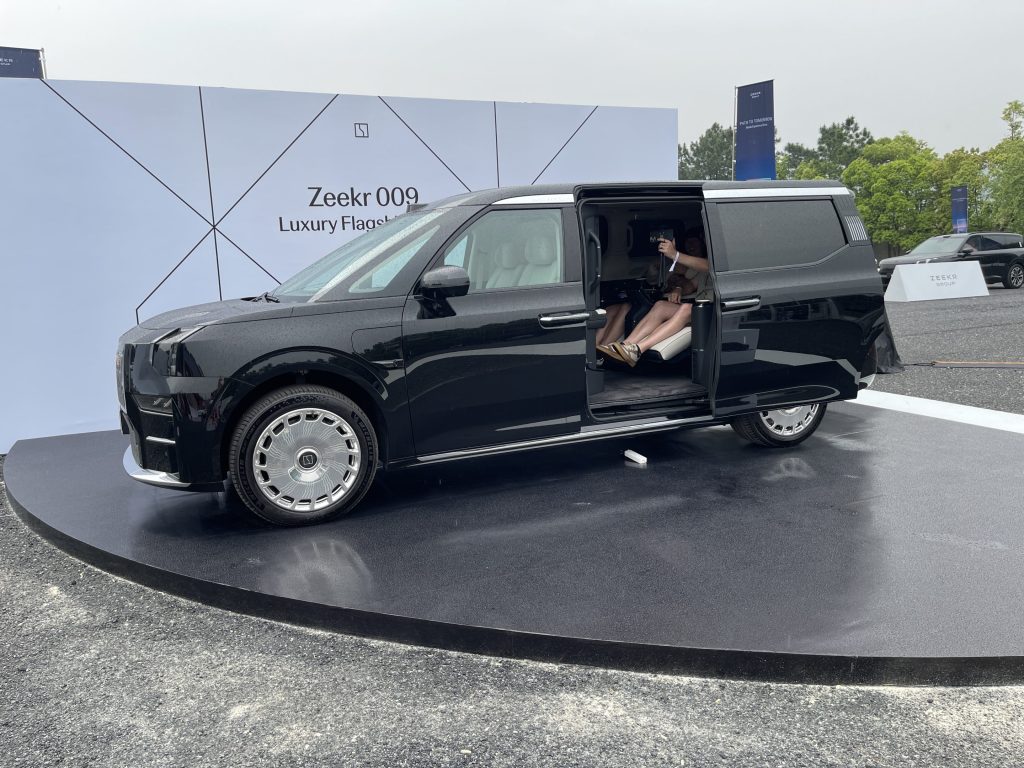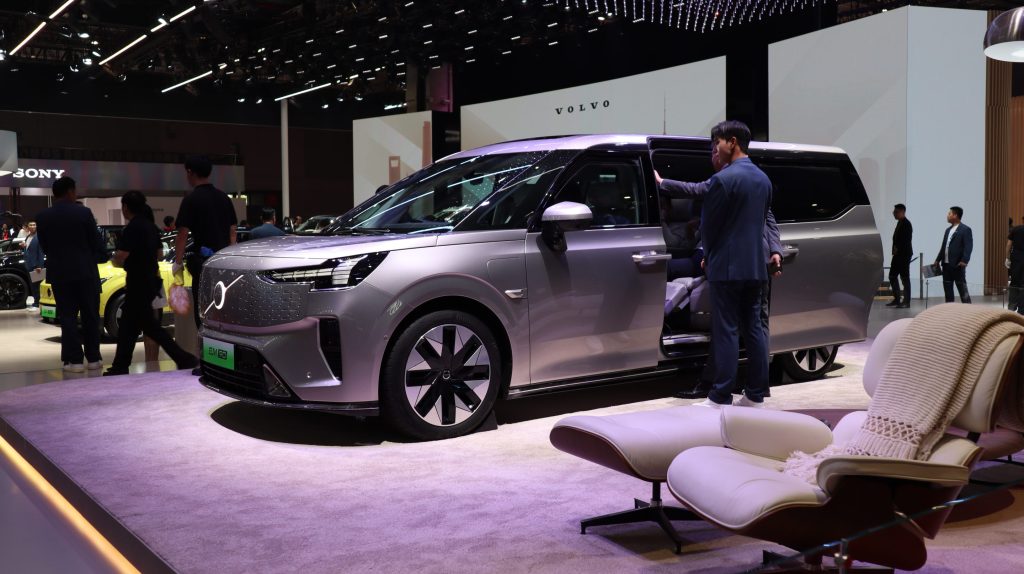At the Auto Shanghai 2025 exhibition in China, one of the most significant debuts came from a European marque: the Mercedes-Benz Vision V. Interestingly, this model is neither an SUV nor a high-end sports sedan; instead, it’s a minivan (MPV). The event also showcased several other MPVs. As people assumed SUVs were dominating the automotive scene indefinitely, could minivans be staging an unforeseen resurgence?
The Rise and Fall of the Minivan
Multi-purpose vehicles were once common sights on European streets. Although not typically admired for their looks, these models gained popularity among families due to their functionality—offering up to seven seats and ample storage space—as opposed to traditional estate cars (or station wagons). During peak times, they accounted for around 10% of vehicle sales in Europe. However, by the late 2000s, their sales started declining sharply. This decline was partly because sport utility vehicles became increasingly favored; many of these offered both style and an optional third row of seating. taking over By 2023, MPVs had dropped to only 2% of the European market share.
The latest iteration of minivans stands apart from traditional family haulers, with the Mercedes-Benz Vision V embodying this shift. Unlike typical passenger vans, this vehicle is designed as a luxurious limousine meant for chauffeurs, targeting a similar clientele as the prestigious S-Class and its high-end Maybach edition. Featuring an avant-garde design, the Vision V aims to evoke envy among Rolls-Royce enthusiasts. Its rear seats come equipped with a massive 65-inch display, surpassing even what you’d find in BMW’s ultra-luxury i7 sedan, complemented by a sophisticated 42-speaker Dolby Atmos audio system. Rather than focusing on transporting numerous individuals, the emphasis here leans towards providing a comfortable lounge-like setting. According to plans, Mercedes-Benz intends to launch production versions inspired by the Vision V concept beginning in 2026.

High-end vans have gained significant popularity in China, with the Zeekr 009 serving as a prime example. While standard models offer typical seating arrangements of six or seven passengers, the standout feature is an exclusive configuration designed for only two rear occupants, similar to the Vision V concept, known as the Grand. This setup includes a massive 43-inch display. The seats within the 009 Grand exude opulence, equipped with all conceivable luxuries such as a built-in fridge. It essentially elevates traditional luxury travel experiences, resonating strongly with buyers. In 2023, the Zeekr 009 saw sales reach 19,210 units in China, which climbed to 22,631 units in 2024; however, specific data regarding how many were the high-end two-seat Grand variant wasn’t provided.
In 2024, Zeekr introduced a fresh interpretation of the MPV at the Chinese auto expo held in Beijing. This event rotates annually between Beijing and Shanghai. Unlike the luxury-oriented 009, the Mix targets conventional households seeking an everyday minivan designed to elevate daily living experiences. Its standout feature includes the absence of a B-pillar—enabling easier access—and flexible seating arrangements. Specifically, the forward-facing front seats can pivot backward, allowing a central table to transform the interior space into a portable dining area—an ideal setup for outdoor family meals. Despite not matching the sales success of the 009, the Mix signals evolving innovation within the segment. Interestingly, it shares a platform developed alongside Waymo, the self-driving ride-hailing firm, hinting at potential future advancements toward autonomy.
Highlighting the significance of the minivan segment in China, Volvo showcased its EM90 minivan at Auto Shanghai 2025. This vehicle has also taken center stage among the featured models in Volvo’s Chinese retail store exhibitions. As expected, the EM90 shares its architecture with the Zeekr 009, both being products under the larger umbrella of the Chinese conglomerate Geely. Despite this, the EM90 has not achieved the level of popularity enjoyed by its counterpart from Zeekr.

Toyota evidently recognizes the revival of interest in multi-purpose vehicles (MPVs) within Asia and introduced the Veloz in 2021 for Southeast Asian countries like Thailand and Malaysia, along with some nations around the Arabian Peninsula. These areas have maintained their affinity for minivans over time. The Veloz represents a step-up version of the MPV concept; both Daihatsu’s Xenia model from 2003 and Toyota’s own Avanza share similarities but lack the enhanced luxurious features present in the Veloz. While the Veloz emphasizes added comfort compared to earlier models, it still falls short when benchmarked against high-end options such as the Zeekr 009. Additionally, Toyota provides another upscale option through the Alphard MPV across comparable geographic zones, plus Japan itself, complementing it with the even pricier Lexus LM variation under its prestigious brand umbrella.
Mini-vans are making a comeback, but now they're like mobile palaces.
Therefore, the MPV is experiencing a luxurious resurgence in Asia. The key question now is if this trend will also make its mark in Europe and the U.S. Volkswagen has historically been quite popular for minivans in these areas, dating back to the "Splitscreen" model from 1950. More recently, the ID. Buzz has led the company towards an electric-powered MPV future, though perhaps not entirely yet. U.S. recall Has softened the impact of its debut, and the steep pricing has limited sales figures in Europe despite favorable critiques. In 2024, the ID. Buzz managed to sell fewer than 30,000 units worldwide. Nevertheless, whereas the rear seating rows in most SUVs typically accommodate only small passengers for short city trips, the extended-wheelbase version of the ID. Buzz provides ample space for adults, a characteristic unmatched among electric vehicles currently offered in Europe. This is a car many desire, even though purchases have been somewhat restrained up until now.
Several brands are placing their bets on the resurgence of the MPV beyond Asia. The Chinese contender brand XPENG anticipates that this revival might provide them with an advantage in the European market. Despite launching initially in the EU with models like a sedan, a full-size SUV, and a compact SUV named G6 for its introduction into the UK, XPENG plans to follow these releases with the X9. Designed as a luxurious MPV similar but slightly more accessible than the Zeekr 009, the X9 made its debut during the unveiling event for the G6 in the UK and is scheduled for sales starting from late 2025. Mercedes-Benz has also announced intentions to introduce two vehicles: the Vision V under the designation VLS in both the US and Europe, along with a higher-end family-oriented minivan known as the VLE, which shares its all-electric VAN.E platform with the former model.
Opinions remain divided regarding whether the recent upscale shift seen in minivan models, which have gained traction in China, can be mirrored elsewhere. In Europe during 2024, SUVs maintained a commanding presence with a 54% share of the market—a rise of three percentage points from the prior year. The likelihood of multi-purpose vehicles regaining their former widespread appeal within the broader European consumer base seems slim. However, this emerging luxurious approach represents a distinct change rather than aiming for similar high-volume sales figures as previously targeted. Expect an increase in such opulent mobile homes across Europe shortly. If you venture into China, encountering numerous examples of these lavish modes of transport will undoubtedly occur.
This tale was initially showcased on romero.my.id

Posting Komentar
Posting Komentar